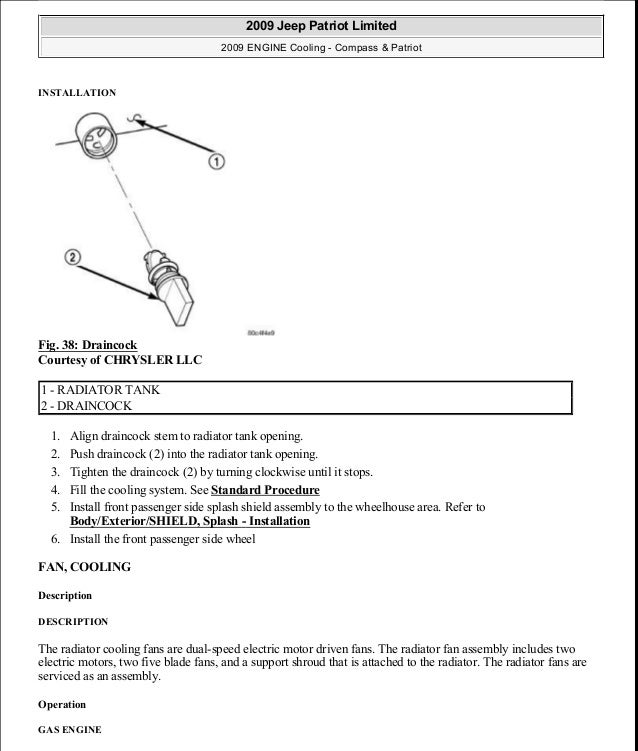
Download Airpath Compass Overhaul Manual For A 2009

A that can be used as a compass because of the inside. A compass is an instrument used for and orientation that shows direction relative to the geographic (or points). Usually, a diagram called a shows the directions,,, and on the compass face as abbreviated initials.
Noti v konov dzhazovaya syuita. Koka, MD is a practicing Pediatrician in San Jacinto, CA. Koka graduated from Eastern Virginia Medical School in 1994 and has been in practice for 23 years. A close friend of Ndonyi's, Rosalyina Disango, died as a result of the incident. Ndonyi became angry when Rosalyina's death was misreported as a suicide, and as a result, Ndonyi attempted to contact members of the press to have the true story of her friend's death published. Attorney-General v A.D. Silva ((1953) 54 NLR 529) and submitted that a Public Officer cannot bind the State unless expressly empowered to do so. It was also contended that the same principle was recognized and applied in Dean V The Attorney-General ((1923) 25 NLR 333), The. The latest Tweets from Tokazi.V.Nonyana (@vnyctokazi14). I go after the impossible & i always win.Glory be to God We've detected that JavaScript is disabled in your browser. Attorney Licensee Search - The State Bar of California. License Status, Disciplinary and Administrative History Below you will find all changes of license status due to both non-disciplinary administrative matters and disciplinary actions.
Download 'individual history. De havilland chipmunk t.mk.10 wp962/9278m museum accession number x002-3448'. Download Joe Bonez torrent or Joe Bonez magnet link has 17344 resources,search torrent from torrent sites- bthad.com. Download Airpath Compass Overhaul Manual.
When the compass is used, the rose can be aligned with the corresponding geographic directions; for example, the 'N' mark on the rose points northward. Compasses often display markings for angles in degrees in addition to (or sometimes instead of) the rose. North corresponds to 0°, and the angles increase, so east is 90° degrees, south is 180°, and west is 270°. These numbers allow the compass to show or azimuths or, which are commonly stated in this notation. If magnetic declination between the magnetic North and true North at latitude angle and longitude angle is known, then direction of magnetic North also gives direction of true North. Among the, the magnetic compass was first invented as a device for as early as the (since c. 206 BC), and later adopted for navigation by the Chinese during the 11th century.
The first usage of a compass recorded in and the occurred around 1190. A military compass that was used during The magnetic compass is the most familiar compass type. It functions as a pointer to ', the local magnetic meridian, because the needle at its heart aligns itself with the horizontal component of the. The exerts a on the needle, pulling the North end or pole of the needle approximately toward the Earth's, and pulling the other toward the Earth's.
The needle is mounted on a low-friction pivot point, in better compasses a, so it can turn easily. When the compass is held level, the needle turns until, after a few seconds to allow oscillations to die out, it settles into its equilibrium orientation. Norton ghost 12 iso 2016 requirements. In navigation, directions on maps are usually expressed with reference to geographical or, the direction toward the, the rotation axis of the Earth. Depending on where the compass is located on the surface of the Earth the angle between and, called can vary widely with geographic location. The local magnetic declination is given on most maps, to allow the map to be oriented with a compass parallel to true north. The location of the Earth's magnetic poles slowly change with time, which is referred to as.
The effect of this means a map with the latest declination information should be used. Some magnetic compasses include means to manually compensate for the magnetic declination, so that the compass shows true directions.
Non-magnetic compasses There are other ways to find north than the use of magnetism, and from a navigational point of view a total of seven possible ways exist (where magnetism is one of the seven). Two sensors that utilize two of the remaining six principles are often also called compasses, i.e. Gyrocompass and GPS-compass.

Main article: A gyrocompass is similar to a. It is a non-magnetic compass that finds by using an (electrically powered) fast-spinning wheel and friction forces in order to exploit the rotation of the Earth. Gyrocompasses are widely used on. They have two main advantages over magnetic compasses: • they find true north, i.e., the direction of 's rotational axis, as opposed to, • they are not affected by metal (including iron, steel, cobalt, nickel, and various alloys) in a ship's hull.
(No compass is affected by nonferromagnetic metal, although a magnetic compass will be affected by any kind of wires with passing through them.) Large ships typically rely on a gyrocompass, using the magnetic compass only as a backup. Increasingly, electronic are used on smaller vessels. However, magnetic compasses are still widely in use as they can be small, use simple reliable technology, are comparatively cheap, are often easier to use than, require no energy supply, and unlike GPS, are not affected by objects, e.g.
Trees, that can block the reception of electronic signals. GPS receivers used as compasses using two or more antennae mounted separately and blending the data with an inertial motion unit (IMU) can now achieve 0.02° in heading accuracy and have startup times in seconds rather than hours for gyrocompass systems. The devices accurately determine the positions (latitudes, longitudes and altitude) of the antennae on the Earth, from which the cardinal directions can be calculated.
Manufactured primarily for maritime and aviation applications, they can also detect pitch and roll of ships. Small, portable GPS receivers with only a single antenna can also determine directions if they are being moved, even if only at walking pace.